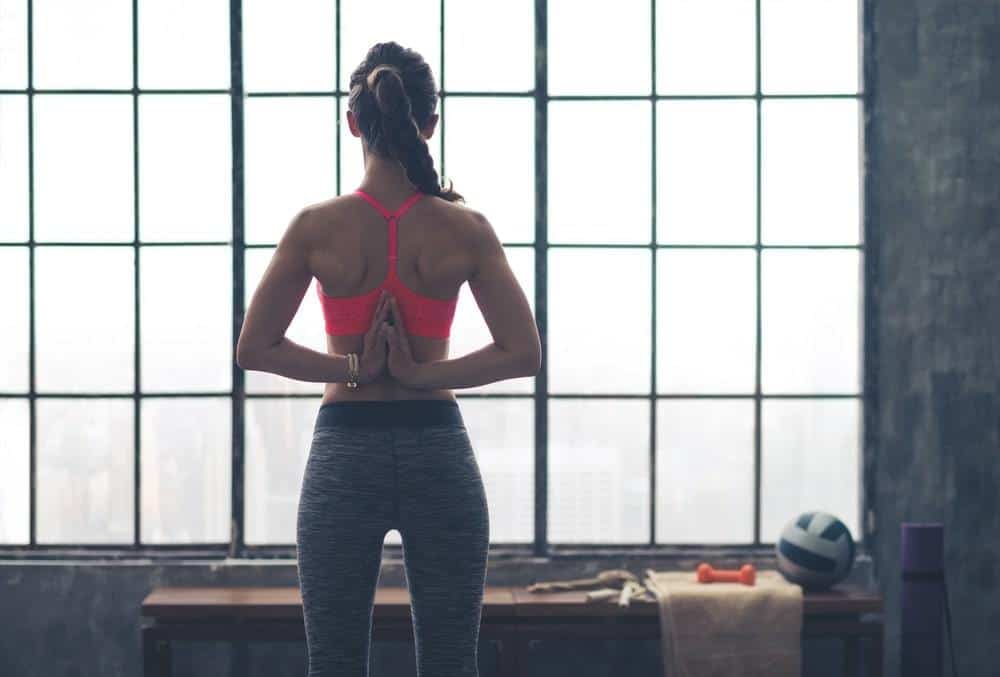
You may remember parents, grandparents, or even teachers constantly barking at kids about sitting straight.
Many dismiss this as some kind of “standard” that older people have set but doesn’t really hold much value.
This is plainly not true at all. You don’t have to be a member of the royal family just to sit straight and maintain good posture.
The truth is, your poor posture today can be your biggest regret tomorrow.
But how do you correct your posture when it feels oh-so-good to just slouch on your chair while you go about your day?
Here are a few simple stretches for posture that you can do each day as part of your routine to improve your posture or whenever you’re starting to feel some pain:
1. Shoulder Pulls
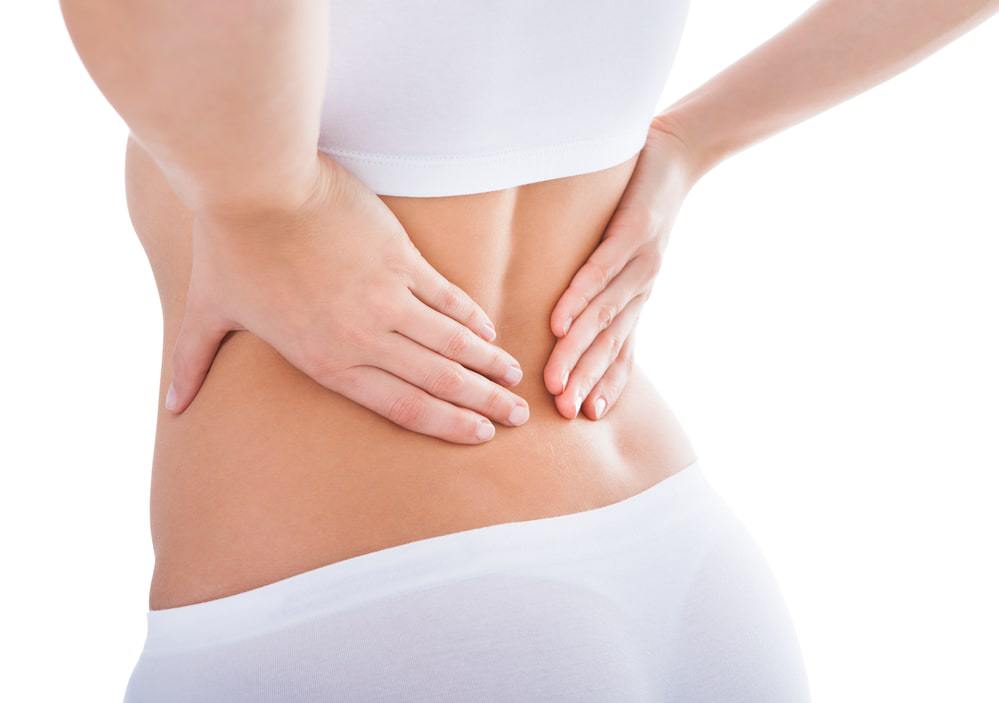
This is one of the simplest stretches for shoulder posture. Training yourself doing this for a couple of minutes each day can make you conscious of how you carry yourself.
When your shoulders are always straight, you’ll less likely develop any pain or soreness even when you’re working for a long time.
Best of all, a levelled shoulder will boost your confidence because you’ll feel dignified as you stand or sit.
How it’s done:
- Stand comfortably straight (you can actually even do this while sitting) as long as your spine is straight.
- Slowly pull your shoulders back, you should feel your shoulder blades contracting closer.
- As you pull your shoulders, both your arms should naturally form a 90-degree angle parallel to your sides.
- Keep pulling back while squeezing your shoulder blades together to the most point you can tolerate.
- Do this for about a dozen times, you can do this as many times each day as you want.
2. Overhead Arm Lifts

When you want to maintain or correct your posture, your back and shoulders should not be your only focus.
And when you do stretches for good posture, you will essentially wake up all your limbs and strengthen your core.
How it’s done:
- Sit in comfortably and let your weight settle evenly around your hips. Make sure the chair you’re using is leveled and flat. Your feet should be planted flat from toe to heel on the floor.
- Straighten your back and tuck in your stomach. You’ll feel your core tightening. Then let both your arms drop comfortably to your side.
- Slowly lift both arms from your sides, to your shoulder level, until both arms are above your head. Imagine clapping at a concert where you lift your arms from your sides and clap your hands above your head.
- From the top position, slowly drop your arms back to your starting position. The pace should be the same when you raise and drop your arms.
- Repeat this for 20 times. You’ll feel your core strengthen as you keep going.
3. Slow-Bob Neck Stretch
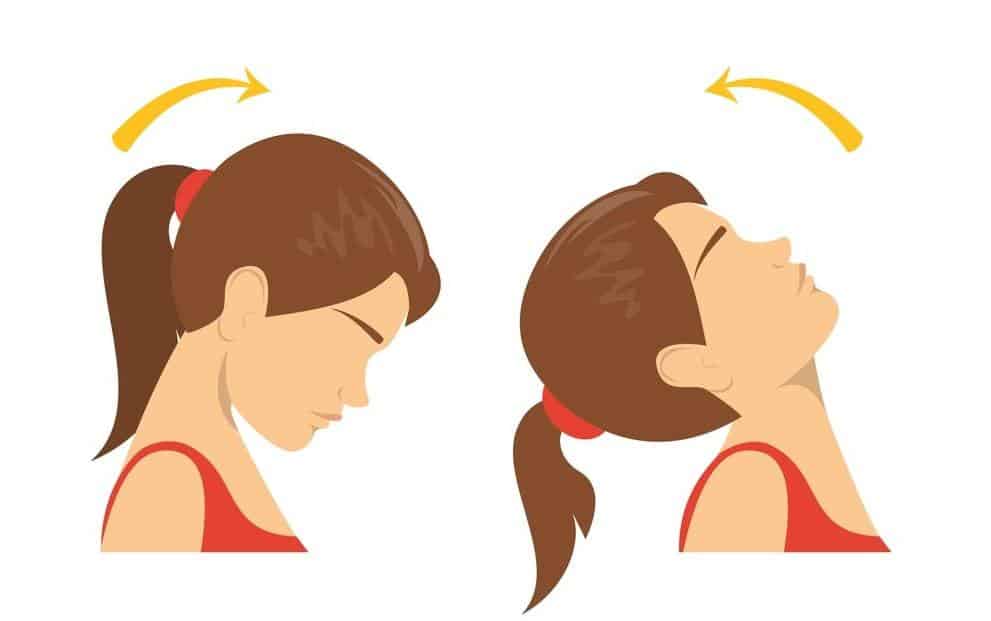
“Heavy is the head that wears the crown” as metaphorical as that is, it actually bears an effect on your posture and how your neck feels supporting your head.
When you have a lot on your mind, or when you’re engrossed in what you’re doing, you tend to have your head bowed down for long periods.
And that can cause strain on your neck that leads to pain, injury, or even a permanent condition. Here’s one of the simplest neck stretches for posture.
How it’s done:
- Stand or sit straight with your arms resting on your sides. Keep your back straight.
- Start with your head straight, facing forward. Then slowly tilt your head back, you’ll feel the muscles below your shoulders and above your shoulder blades tense up. Hold this position for about 3 seconds. Then return your head to your starting position.
- Next, bow your head down, with your chin tucking down. This time, you’ll start feeling your clavicle starting to tense up. Hold this for 3 seconds and return to your starting position.
- Repeat this for about 15 times. Do this several times each day especially if you tend to keep your head down for long periods. The more you do this, the less tense and sore you’ll feel. Your neck will be stronger, and it will also have better ability to support your head properly.
4. Prayer Pose Stretch
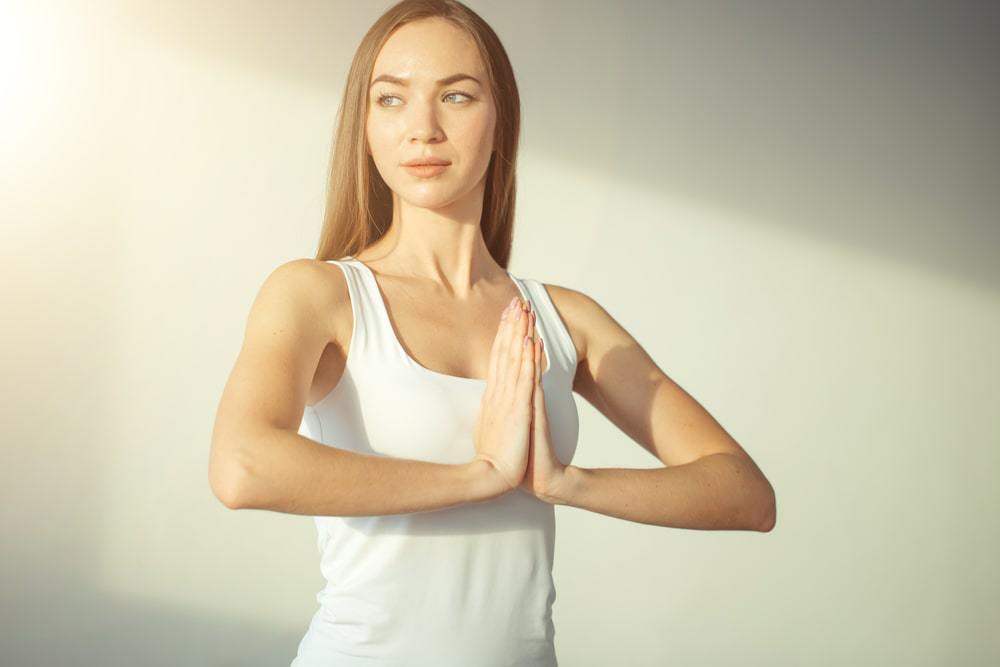
This one is similar to yoga stretches for posture and meditation. Not only does it help you feel better, but it also promotes and corrects posture.
This targets your back, arms, shoulders, neck, and even your carpals.
Poor hand posture can lead to carpal tunnel, and if you don’t maintain proper back posture, you’ll risk developing a hunch that may become irreversible.
How it’s done:
- Stand straight and plant your feet firmly on the ground. Straighten your back and hold your head upright. Your shoulders should be leveled and your arms rested on your sides
- While you keep your back straight, put your hands together, as if in prayer. Your elbows should be parallel to your shoulders, and your arms straight and parallel to your elbows.
- Your hands should be about 90 degrees. Start to push your hands together slowly, but as hard as you can. You’ll feel your shoulders tighten. At this point, you should consciously correct your back posture. Hold the same position for about 10 seconds. Then, without moving your hands, slowly drop your elbows to your sides and rest for 3 seconds.
- Slowly lift your elbows again (without moving your hands) until they’re parallel to your shoulders once more.
- Repeat this for about 12 times. It might feel a bit uncomfortable at first, but the more you do this daily, you’ll feel your shoulders and upper back feel stronger and less sore than you’re used to feel.
5. Pecs Push
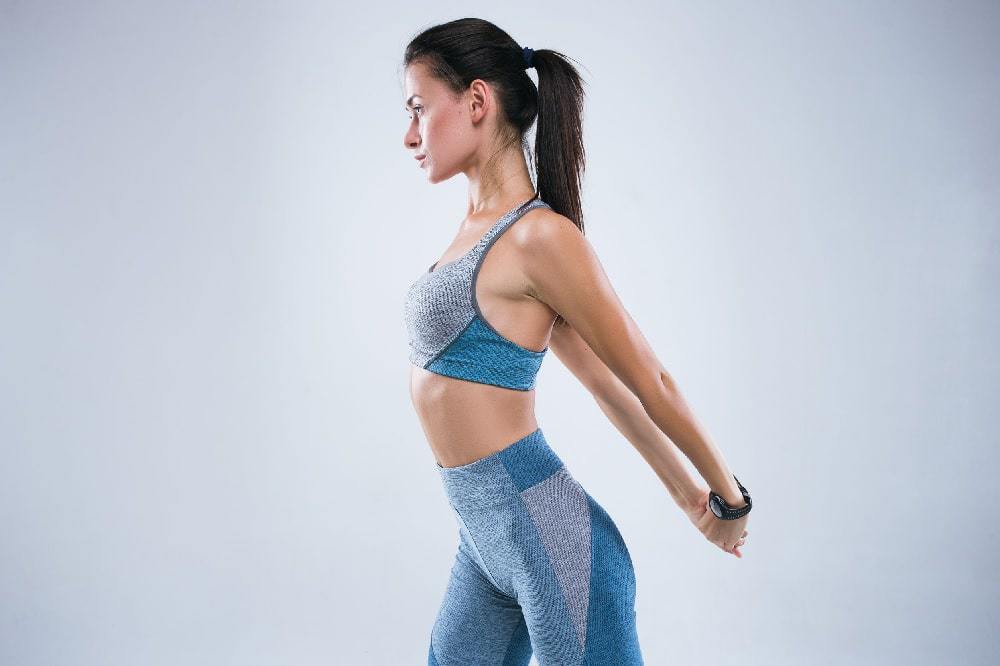

Slouching feels so good for many, especially if you’ve been standing for quite some time. But doing so will be bad for you, not just for your posture, but it’s also bad for your respiration.
When you slouch, you tend to put unnecessary pressure on your lungs, and that makes your lungs work twice as hard as it needs.
The Pecs Push stretch is not only best for posture correction, it’s also one of the easiest stretches for back pain and posture improvement.
Slouching compresses your lungs and makes it work twice as hard.
How it’s done:
- Stand straight and keep your feet about your hip’s width apart, and have your arms resting on your sides.
- Keep your shoulders leveled and start extending your arms behind your back. Slowly make both hands reach and clasp them together, with your fingers interlocked.
- Pull as far as you can without breaking hold of your hands. Hold this position for 30 seconds and keep your back and neck straight at all times. Slowly drop your clasped hands down until it rests on the base of your butt.
- Repeat this several times. You can do this for a couple of times each day, and gradually increase your holding time from 30 seconds to 60 seconds. But make sure not to immediately try 60 on your first try so you don’t feel sore.
What Do You Get From Posture Correction?
Maintaining proper posture can give you more benefits than just looking good when you look at the mirror, appreciating your outfit. Here’s a quick list of what you can gain from good posture:
- Decrease developing headaches
- Decrease and possible elimination of back pains (both in the upper and lower areas)
- Improve your blood circulation that will, in turn, maintain good health because all your organs and veins will be properly oxygenated
- Higher energy levels
- Better mood that lasts all day
- Feel better as you appear taller and exude confidence as you stand and walk
How Can Poor Posture Result In Back Pain?
Want to learn more? Watch the FREE Masterclass available now!
Many often think that back pain is normal because they’ve been working for too long, or have been standing or sitting for a while. But the thing is, the real culprit is often as simple as poor posture.
Poor posture can cause pain, injury, and even encourage developing diseases.
When you slouch, you put extra strain on your back, neck, and hips. Even if you don’t feel it immediately because you feel comfortable in that position, it’s not good for your body.
Before you know it, you start feeling a sore neck.
Keeping your head down might be a sign of humility for most cultures, but it’s not healthy for your neck.
Simply because it’s not your natural neck position and the lower you put your head, the heavier it is to support.
Keep in mind that your neck is only composed of a few bones and is in charge of holding your head and your back together.
Poor posture can also put unnecessary strain on your organs especially on your blood flow. If you have poor blood circulation, your organs and limbs will be deprived of the oxygen it needs to stay healthy.
And as a result, that can run the risk of developing pain, injury, and diseases.
What are you risking if you don’t fix your posture?
Here’s a quick list of what can happen when you allow yourself to succumb to poor posture:
- Hunch
- Fibromyalgia
- Carpal Tunnel
- Cervical Spine Injury
- Tailbone Injury
- Migraines
- Hip fractures
- Diabetes
- Respiratory Illnesses
- Cardiovascular Diseases
- Irritability
- Depression
- Poor self-confidence
If your posture isn’t maintained or corrected, you open yourself in a world of pain and other possibilities that you’ll likely regret in the future, note that some of these are irreparable.
But if you start including daily stretches for posture, you’ll start feeling better and your body will thank you for it, too.
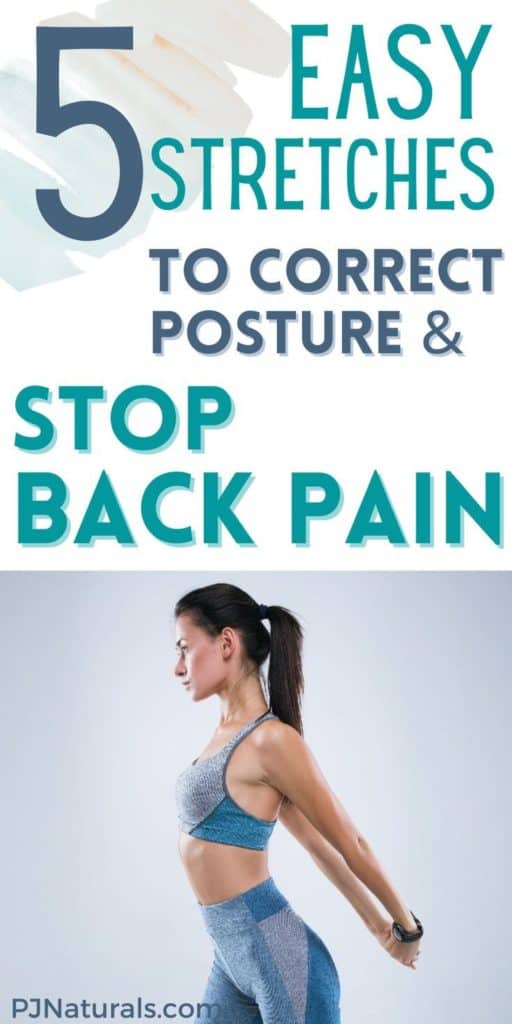
Related Posts:
Can You Be Fit and Healthy With Low-Impact Exercises?
Home Remedies For Back Pain – Natural Back Pain Treatments
Which Sleep Gifts Are Best for Your Back (11 Most Rated Gift Ideas)
How Do Outdoor Activities Increase Self-Confidence?
Is Sleeping on the Floor Good for Back Pain? (4 Crucial Facts To Consider)
Low Impact Exercise Pros and Cons (Everything You Should Know)
Natural Healing Methods – 7 Holistic Therapies Proven To Work






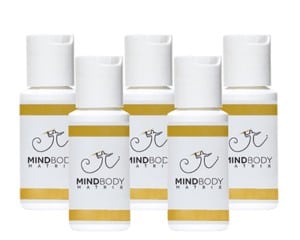
FABULOUS!
I am a sculptor who is constantly bending over my work. I REALY NEED THIS! THANKS
Thank you so much! Happy to hear you found it helpful!
This will help many not only with posture but back pain.
Thank you, great to hear!
Thanks for these tips and reminders!
You’re welcome, all the best!
Ive done some of these stretches and they definitely help with tension in your neck and back.
Thanks for sharing!
Helpful post!
Thank you!
Informative
Thank you Shailendra!
These exercises are beneficial because just thinking them through makes me straighten up!
Good thinking Sue, whatever helps!
This is very helpful! I sit infront of my laptop ot tablet mostly as I work on my social media blog posts daily, and surf the Internet sa well. The stretching exercises are doable even at my senior age. Thanks for posting this!
Thanks Dory
This is a great and helpful post for me.
Thanks also for liking my post, It’s all energy!
Thank you! ❤
Very useful.
Thanks Vijay!
This is very helpful information
Happy to hear it’s useful!
Nice and helpful tips. Thanks for sharing.
Thank you!
love these stretch ideas!! I do these fairly often too. It helps!!!
That’s lovely to hear Vicki, glad it helps ❤
An excellent reference for posture correction exercises.
Thank you Gordon! ❤